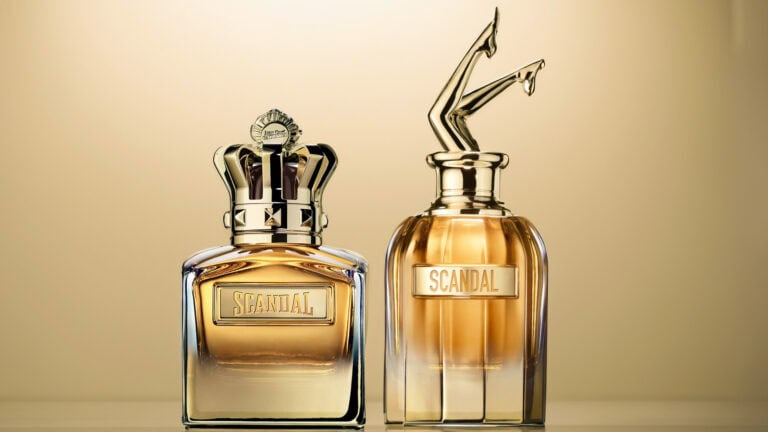Mirabelle
The Sweet and Tangy Appeal of Mirabelle in Perfumery
Mirabelle, a small golden plum native to France, brings an intriguing, sweet, and slightly tart note to the world of perfumery. Its juicy, sun-ripened scent is evocative of summer orchards and warm afternoons, adding a fruity brightness that can lift and transform a fragrance. While often associated with desserts and jams, the unique aroma of Mirabelle has found its way into many perfumes, offering a refreshing and unexpected twist. Let’s dive into how perfumers capture its essence and the creativity behind blending Mirabelle into stunning fragrances.
The Process of Capturing Mirabelle’s Aroma
Unlike typical florals or woody notes that are directly extracted through distillation, the scent of Mirabelle is derived through careful recreations using both natural extracts and synthetic components. Mirabelle itself is a delicate fruit, and its natural aroma doesn’t lend itself easily to traditional perfume extraction techniques. To mirror its sweet and tangy scent, perfumers often blend a variety of fruity and slightly floral notes that mimic the true profile of Mirabelle.
- Natural Extraction: Some perfumers may use the juice or oil extracted from the skin of the fruit in minute quantities, though this is rare. Typically, the fruity and juicy elements are derived from other fruits like apricot or peach, which share similarities with Mirabelle.
- Synthetic Compounds: Perfumers also rely on synthetic compounds such as aldehydes or esters to replicate the bright, zesty character of the fruit. These compounds help create the illusion of a fresh plum, highlighting the subtle sweetness, juiciness, and a touch of tartness that defines Mirabelle.
The result is a fruity note that’s both vibrant and fresh, offering a lush, ripe sweetness balanced by a slightly acidic undertone, much like the golden plums themselves.
Blending Mirabelle into Fragrance Compositions
Mirabelle’s bright, juicy profile makes it a versatile ingredient that can elevate a variety of fragrance families. Its combination of sweetness and tang brings a unique twist to gourmand, floral, and even oriental perfumes.
- Fruity Gourmand Creations: The rich, juicy sweetness of Mirabelle blends effortlessly with other gourmand notes like vanilla, caramel, and honey. These warm, sweet elements balance Mirabelle’s tartness, creating a fragrance that feels both indulgent and refreshing. For instance, Thierry Mugler’s Angel Eau Croisière introduces Mirabelle alongside fig and praline, creating a unique contrast between the fruity and edible notes.
- Floral and Fruity Combinations: Mirabelle pairs beautifully with floral accords, especially delicate blossoms like rose, jasmine, and peony. It adds a vibrant, fresh top note that uplifts the florals, giving the fragrance a light, airy feel with a sparkling fruitiness. Jo Malone’s Plum Blossom uses Mirabelle to enhance the floral heart of the fragrance, giving it a playful yet sophisticated edge.
- Chypre and Oriental Perfumes: The tangy sweetness of Mirabelle can also soften and brighten chypre or oriental compositions. When blended with earthy or woody notes like patchouli or amber, Mirabelle introduces a refreshing contrast, making the scent feel lighter and more radiant. The fruit’s sweetness tempers the heaviness of resinous or spicy notes, adding a modern twist to these more traditional fragrance families. Chloé Nomade cleverly uses Mirabelle to add a burst of fruity freshness, playing against the deeper oakmoss and woody base.
- Citrus and Fresh Accords: Mirabelle works well in citrus compositions too, where it amplifies the sharpness and freshness of notes like lemon, bergamot, and mandarin. Its natural acidity marries well with these vibrant top notes, creating a fragrance that feels invigorating and energizing. Hermès Eau des Merveilles Bleue pairs Mirabelle with citrus and marine notes, producing a scent that feels like a breezy coastal summer.
Iconic Scents that Showcase Mirabelle’s Beauty
Mirabelle is not the most common fragrance note, but when it is used, it often steals the show with its distinctive and memorable character. Some perfumes have managed to elevate this golden fruit into the heart of their compositions, creating fragrances that stand out for their fruity allure.
- Chloé Nomade: This modern chypre fragrance uses Mirabelle to add a delightful twist to its composition. The juicy sweetness of the fruit contrasts beautifully with the earthy oakmoss and patchouli base, creating a scent that feels free-spirited and contemporary.
- Jo Malone Plum Blossom: Mirabelle is a key player in this light and airy fragrance, bringing a fresh fruitiness to the delicate floral notes of plum blossom and jasmine. The result is a fragrance that is bright, feminine, and perfect for spring and summer.
- Mugler Angel Eau Croisière: Mirabelle brings a unique fruity sweetness to the iconic Angel line, blending with fig and praline to create a fresh, gourmand scent with an exotic twist. This limited edition is a playful and sunny take on the classic Angel formula.
The Irresistible Charm of Mirabelle in Perfumes
The addition of Mirabelle into fragrances offers a fresh burst of fruitiness that evokes joy and warmth. Its duality of sweet and tart notes makes it a highly versatile ingredient, capable of enhancing both playful and sophisticated perfumes. Whether it’s adding brightness to a floral heart, richness to a gourmand base, or balance to woody compositions, Mirabelle has proven to be a fruitful (pun intended) addition to perfumery.
Fragrances that feature Mirabelle show how a single, often overlooked fruit can have a dramatic impact on a scent, transforming it into something truly memorable.
